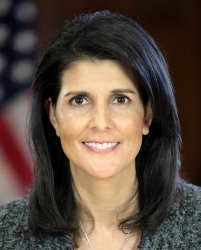Nikki Haley’s Pennsylvania Primary Showing in Historical Context
Four withdrawn presidential candidates since 2000 received a larger percentage of the state’s presidential primary vote than Haley did on Tuesday

Nikki Haley did so for a fourth time since her March 6th exit from the 2024 GOP nomination race – this time in Pennsylvania, where she received 16.6 percent against Donald Trump, the only other GOP candidate on the ballot.
Haley’s showing prompted many headlines emphasizing her purportedly strong performance and how it is a barometer for Trump’s fragile support within his own party:
“Trump Wins Pennsylvania Primary, but Remains Haunted by Haley” – New York Times
“Donald Trump Suffers Huge Vote Against Him in Pennsylvania Primary” – Newsweek
“Haley Voters Persist in Pennsylvania as Biden, Trump Sweep State” – Reuters
“Trump Bruised by Another Brutal Haley Protest Vote in Pennsylvania Primary” – Daily Beast
Pennsylvania marks the fourth state in which Haley, who has not yet endorsed the former president, has received at least 15 percent of the GOP primary vote – joining Washington, Arizona, and Kansas.
The Pennsylvania showing perhaps has received more attention in part because the other primaries took place during the month of Haley’s withdrawal. It has now been seven weeks since she exited the race.
Pennsylvania is also deemed one of the half-dozen key battleground states this November, and thus any perceived weakness by Trump (or Biden) within their own party in the state is magnified.
However, the truth is there is nothing particularly rare about withdrawn candidates accomplishing what Haley achieved in Pennsylvania on Tuesday.
In fact, four ex-candidates have received more support in the Keystone State in the 21st Century.
In 2000, Democrat Bill Bradley won 20.8 percent of the vote on the April 4th primary – nearly a month after his March 9th exit from the race against Vice President Al Gore.
Moreover, the former New Jersey U.S. Senator did so with a second ‘protest vote’ option available on the ballot: Lyndon LaRouche, who had not withdrawn from the race, received 4.5 percent of the vote.
John McCain, who also withdrew on March 9th, did even better on the GOP side of the ballot that day against Texas Governor George W. Bush.
The Arizona U.S. Senator claimed 22.4 percent whilst sharing the ballot with two other withdrawn candidates: Steve Forbes (exited February 10th) won 2.5 percent and Gary Bauer (February 4th) received 1.4 percent.
In 2012, former Pennsylvania U.S. Senator Rick Santorum withdrew from the race a few weeks before the April 22nd primary in his old home state.
Santorum won 18.4 percent in a four-way race against Mitt Romney that included two candidates who had not officially withdrawn – Ron Paul (13.1 percent) and Newt Gingrich (10.5 percent).
In 2020, Bernie Sanders withdrew from the race against Joe Biden on April 8th but still managed to collect 17.6 percent of the vote at the June 2nd primary – some 55 days later. [That contest also had withdrawn candidate Tulsi Gabbard on the ballot who received 2.7 percent].
A few June GOP primaries have been cancelled, but there will still be a handful of contests where Nikki Haley will be on the ballot: Indiana (May 7th), Maryland (May 14th), Nebraska (May 14th, along with Perry Johnson), West Virginia (May 14th, along with Ryan Binkley and two lesser known candidates), and New Mexico (June 4th, along with Chris Christie, Vivek Ramaswamy, and Ron DeSantis).
Haley will not be on the primary ballot in Oregon (May 21st), Montana (June 4th), or New Jersey (June 4th).
Follow Smart Politics on X/Twitter.
